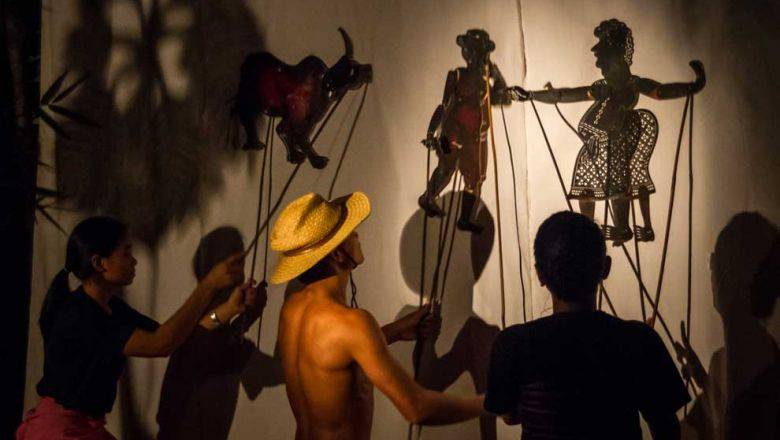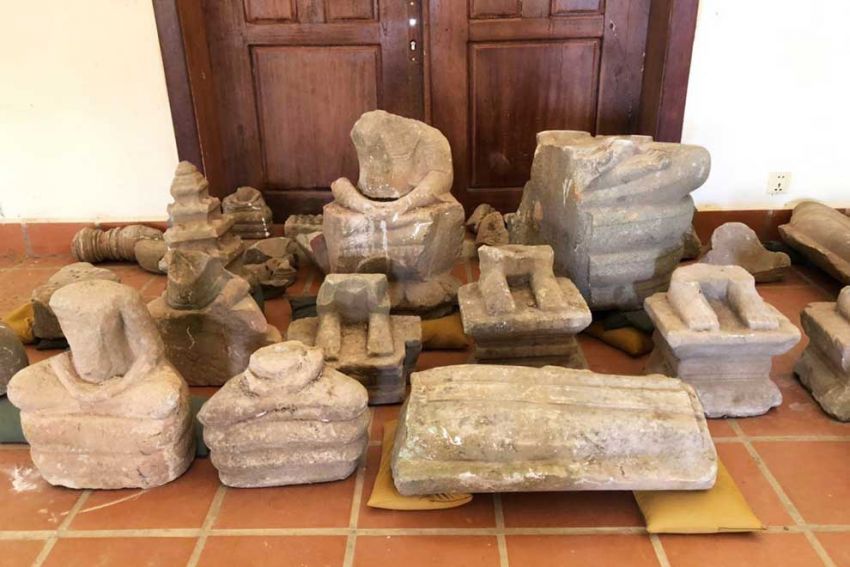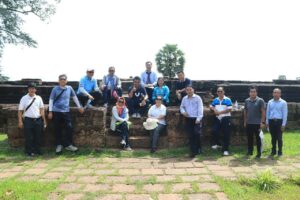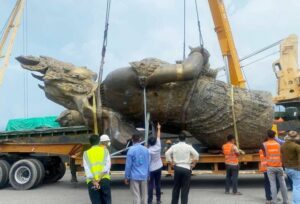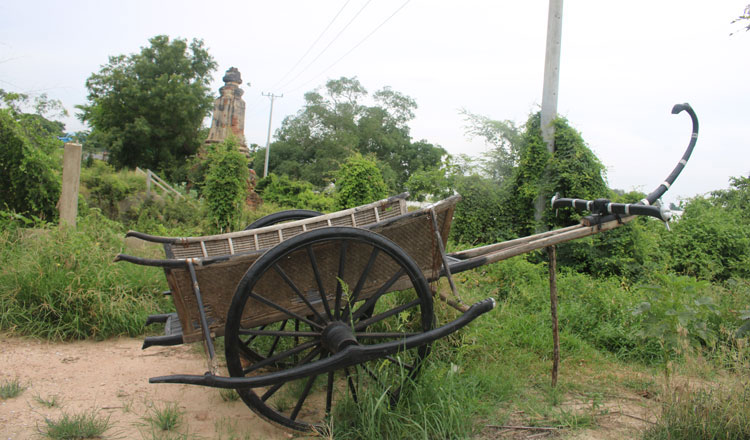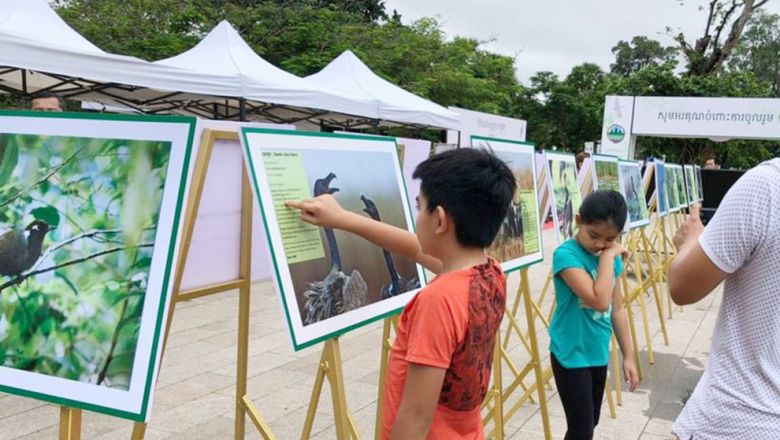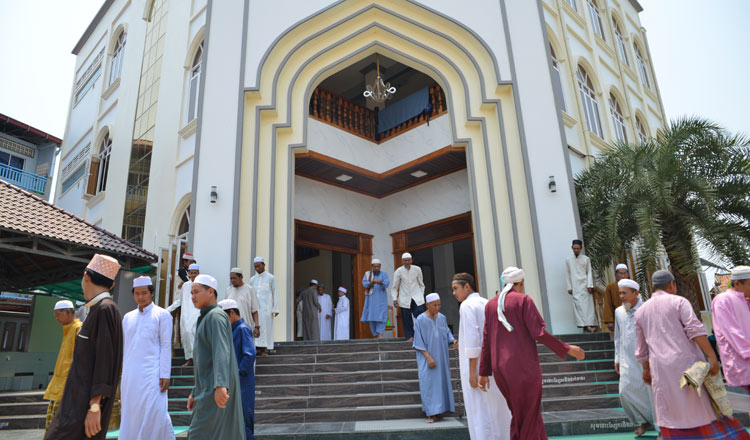Siem Reap’s Bambu Stage: Where Cambodian Puppet Theatre Comes to Life
Fifteen years ago, Nick Coffill and Jon De Rule visited Siem Reap to explore business opportunities. They ended up falling in love with shadow puppetry – one of Cambodia’s most beloved art forms.
The result of that infatuation is Bambu Stage, a performing venue for local puppeteers and other artists.
Cambodian shadow puppetry, which is also known as shadow theatre, is a form of shadow play in which the performers use leather puppets. The two main genres are Sbek Thom, which features the Reamker, and Sbek Touch, which uses smaller puppets and a wide range of stories.
The art form is believed to be losing followers in today’s world as more people turn to their smartphones for entertainment.
Hoping to reverse the trend and contribute to a sustainable arts sector in Cambodia, Coffill and De Rule created Bambu Stage in 2015.
Their vision was to use technology to help visitors engage at a deeper level with the performers and explore the richness of Cambodian culture.
“We wondered: What if we could build the largest ‘digital screen’ ever?” the founders say.
“What if we could replace the large, formal shadow theatre (Sbek Thom) with the smaller, faster-paced village-based popular shadow theatre (Sbek Touch), with its animated, stick-based limbs and bodies?”
Coffill and De Rule thought that bizarre stories of ghosts, demons, fighting buffalos, and eccentric chickens – accompanied by live music, humor, and good storytelling – could surely stand their ground against any entertainment that mobile phones can offer.
“Our ultimate aim is to create an independent, commercially viable local theatre scene, deeply rooted in Cambodian tradition, ” says De Rule, who is also the artistic producer.
Their social enterprise started to take form when they met Sorn Saran, a young leather puppet maker who dreamed of starting his own theatre company in Temple Town.
Each show opens with a series of short videos featuring Saran’s musician friends. They introduce the audience to the art of puppet making and explore the lives of the artists.
De Rule made sure to create an authentic and intimate environment every evening. He built a small fire in front of the stage to act as “a spiritual anchor” between the open-air seating and the stage, mesmerizing the audience with the sight of the moon above the trees.
“The real fire, the front-of-screen action, the mix of puppet styles and the engagement between audience and performer is what really sets Bambu Stage apart from other puppet companies, ” says De Rule.
The organization aims to bring ancient culture and history into one space through the spectacle in its many forms. In some of the performances, old folk storytelling and modern-day drama are delivered through mixed Khmer and English dialogue.
“Anyone that wants to know more about Khmer arts and history is welcome, ” says Claire Taddei, who is in charge of press relations.
As a non-profit social enterprise, Bambu Stage collaborates with other art organizations and considers these partnerships an essential part of their operation.
“Bambu Stage was founded on a spirit of deep collaboration. It’s a place where artists, industry professionals, and visitors meet, exchange and feed each other, ” she said.
She said they work with Cambodian Living Arts in the daily show, Forbidden Rhythms Of Medha.
All in all, around 20 artists are involved in Bambu Stage, including puppeteers, musicians, drummers, dancers, singers, storytellers, and comedians.
Bambu Stage is now running several shows, including Forbidden Rhythms Of Medha, Flames, and Buffaloes, Bambu Stage Snap! 150 Years Of Photography In Cambodia, and Angkor Temple De-coded.
“All our shows are accessible to every generation with no age limits. To be open and accessible to all is part of our DNA. The goal is to share and show Khmer arts and history to everyone, ” says Taddei.
“To have grandparents, parents, and kids all around the fire and laughing and clapping, and then being able to play with the puppets after the show, or even do a hands-on puppet making workshop the next day, helps to create real bonds between visitors to Cambodia and the local arts culture, ” says Taddei.
Bambu Stage relies mostly on tourists. With the number of tourists visiting Siem Reap province each year declining, Taddei says they faced some financial issues last year.
“To be more sustainable, we have been working on improving our communication tools. We have been thinking of creative ways to promote ourselves. Creativity is the key!” says Taddei.
This year promises new experiences and collaborations for Bambu Stage, and like every evening since 2015, the stage lights will be on at 7pm.
To experience this cultural must-see in Siem Reap, visitors can book tickets online at bambustage.com. Tickets for the shows are priced at US$24 (RM100), and for US$38 (RM157) a banquet is included.
The show is free for children under 6. Children from six to 12 pay half price.

